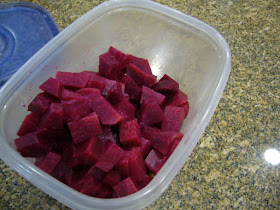 |
| Vine Ripened Crenshaw Melon |
On the first weekend of the 2012 NFL Season, the garden in the Bird Back 40 delivered a sweet treat in the form of a Crenshaw melon. Here on the second weekend on the 2012 NFL Season, the garden is about to deliver five more.
Fresh off watching the San Francisco Giants pull even closer to a National League West title and my suddenly reborn Fresno State Bulldog football team deliver and eye-popping rout of the Colorado Buffaloes, I can tell you that life is pretty sweet at the moment. It's almost as sweet as the Crenshaw melons that are coming off the Bird Back 40 vines in eye-popping numbers.
 |
| A Sweet Surprise Awaits |
I've never grown this melon before. Shame on Bill Bird. Because this melon has now found a permanent home in our North Natomas soil. Short and sweet? The Crenshaw melon loves the Bird Back 40. So, we'll love it back.
The melon pictured above and to your immediate left is the payoff for watching this treat turn from a bright green to a dull yellow. The rind of this melon also tends to die back near the blossom end, which makes it an inviting target for birds and bugs. I watched -- anxiously -- as this treat started to ripen, hoping and praying that the Birds would get to this treat before the mockingbirds that frolic and sometimes curse our backyard.
 |
| Crenshaw Melon Chunks |
Consider this prayers answered. The melon slowly ripened until it told us it was finally ready last Sunday morning. I was rather curious. Our first experience with this melon was rather disappointing. I had picked the first one a smidge too early. Although it was pleasantly sweet, it was nothing like the sweet tastebud surprise we were about to receive.
That taste and wonderful texture grabbed my attention fairly quickly. What exactly is a Crenshaw melon and why I have I waited so long to plant said variety? From our friends at wiseGEEK:
 |
| Crenshaw Melons on the Vine |
"Crenshaw melons were bred by crossing casaba melons with Persian
melons, also sometimes called muskmelons. The favorable traits of both melon
varieties successfully manifested in the cross breed, and it quickly became one
of the more popular melons on the market. The melons can be eaten plain as a
snack food, mixed in with fruit salads, or wrapped in prosciutto for a twist on
the classic prosciutto wrapped melon appetizer."
I'll admit, it's been a strange melon season in the Bird Back 40. August is normally the strongest month for melon production, and while we've pulled our share of cantaloupes and small watermelons from the vine, August production hasn't been anything to really write home to mom about.
 |
| Georgia Rattlesnake Watermelon |
But September? September is a decidedly different story. Those Georgia Rattlesnake watermelon vines are suddenly popping with late season production. While the cantaloupe and Sangria watermelons have largely played themselves out, the Crenshaw vines are putting on a real show with production I've never witnessed in a backyard melon patch before.
The big question mark is, will the weather hold? Melons like long, hot summer days. They don't dig cool fall temperatures. Mother Nature has done her part by delivering a mid-September heatwave, but the days are getting shorter. That can play havoc with melon vines and varieties that need 60-80 days to deliver a firm, vine-ripened melon.
 |
| The Crenshaw: Sliced and Ready to Chunk! |
I don't have any doubts about the Crenshaw melons that are now just starting to turn yellow. But that Georgia Rattlesnake? Why did you take so long to show up? Thank you for coming, but please, hurry up! This weather isn't going to last forever!
There is no better weekend treat than a sliced Crenshaw melon. Starting your day with a bowl of fruit procured from your own backyard vines is the final payoff for a summer of vine-tending work. And, after one bite of a vine-ripened Crenshaw melon, a gardener comes to realize that it was worth the effort and that much more.














